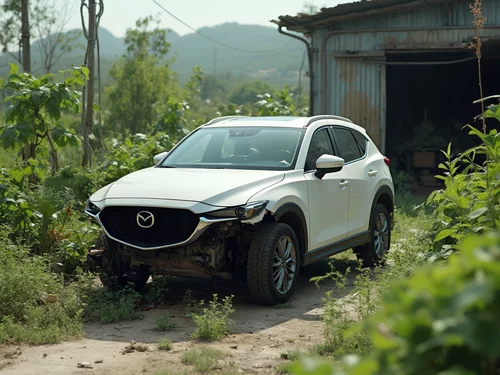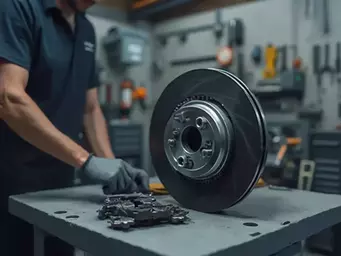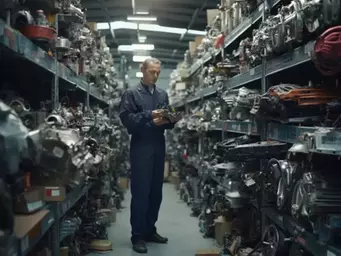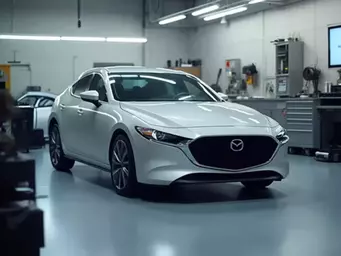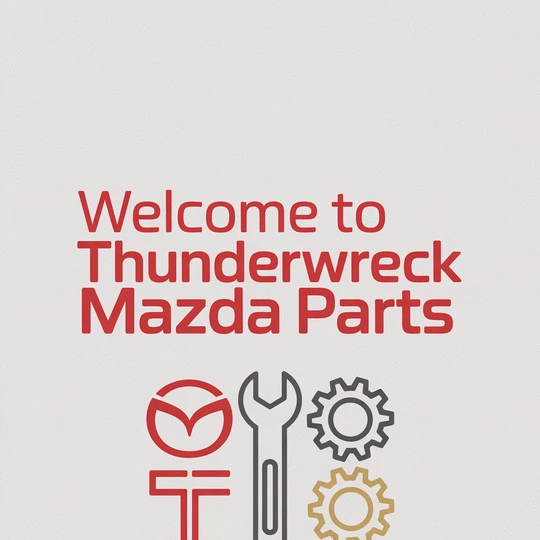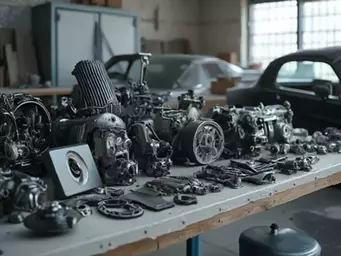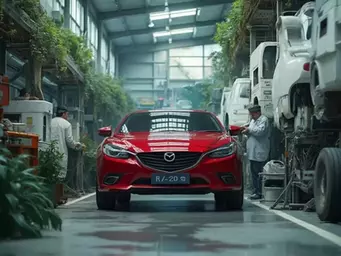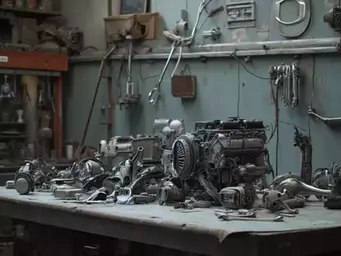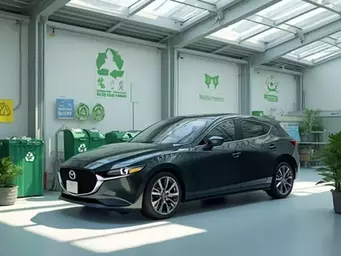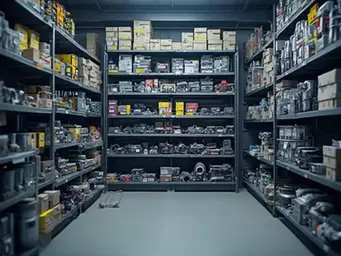What if the way you dispose of your vehicle could help save the planet? Sustainable wrecking practices are not just good for the environment; they're also a smart choice for both Mazda owners and the automotive industry.
What You Will Learn
- Eco-friendly wrecking practices prioritize resource recovery, minimizing the need for new materials.
- Mazda's recycling rate exceeds 90%, significantly reducing landfill waste and promoting a circular economy.
- Innovative technologies like bio-based plastics enhance the recyclability and fuel efficiency of Mazda vehicles.
- The dismantling process involves careful assessment, sorting, and processing of parts to maximize sustainability.
- Real-world case studies illustrate the tangible environmental impact of Mazda's eco-friendly initiatives, including significant reductions in hazardous waste.
- Every vehicle recycled prevents approximately 1.5 tons of CO2 emissions, contributing to a lower carbon footprint.
Mazda's Eco-Friendly Wrecking: Key Achievements & Process
Mazda's commitment to sustainability is evident in its impressive recycling rates and structured wrecking process. Below are key statistics and a breakdown of their sustainable disposal methods.
Mazda's Recycling Rates
Overall Vehicle Recycling Rate
Plastic Components Recycled
- ✔Reduction of 30% in landfill waste
- ✔40% reduction in hazardous waste
The Eco-Friendly Wrecking Process
- Assessment: Thorough inspection to identify reusable parts.
- Dismantling: Careful removal of parts without damage.
- Sorting: Parts categorized for reuse, recycling, or disposal.
- Processing: Recyclable materials processed per regulations.
Goal: Maximize resource recovery, minimize landfill waste, and promote a circular economy.
Environmental Impact & Savings
-
★
Energy Savings: Reusing aluminum from vehicles saves energy equivalent to powering 2,000 homes for a year.
-
★
CO2 Emission Reduction: Every vehicle recycled prevents approx. 1.5 tons of CO2 emissions.
-
★
Carbon Footprint: Reduction of 25% in carbon emissions over the past decade.
Understanding Mazda's Commitment to Eco-Friendly Wrecking Practices
At ThunderWreck Mazda Parts, we believe in the significance of sustainable practices in the automotive industry. When we talk about wrecking, we're referring to the end-of-life process for vehicles, which plays a crucial role in sustainability. By responsibly dismantling Mazda cars and maximizing the reuse of parts, we not only help Mazda owners save money but also contribute to reducing waste in landfills.
It's important to recognize that the way a vehicle is disposed of can have lasting effects on the environment. Eco-friendly wrecking practices ensure that valuable resources are appropriately recycled and reused, ultimately benefiting our planet. This commitment to sustainability is at the heart of what we do at ThunderWreck.
What Are Eco-Friendly Practices in Mazda Wrecking?
Eco-friendly practices in Mazda wrecking focus on minimizing environmental impact while effectively managing end-of-life vehicles. According to the EPA's End-of-Life Vehicle Guide, these practices include:
- Resource recovery: Prioritizing the extraction and reuse of parts to reduce the need for new materials.
- Recycling: Utilizing processes to ensure that metals, plastics, and fluids are recycled appropriately.
- Proper disposal: Ensuring hazardous materials are disposed of in accordance with regulations.
By implementing these practices, we help create a more sustainable future for all Mazda owners. It not only reduces waste but also encourages a circular economy where materials are continuously reused.
How Mazda’s Recycling Rates Influence Environmental Impact
One of the standout aspects of Mazda's commitment to sustainability is its impressive recycling rates. Recent statistics indicate that Mazda has achieved a recycling rate of over 90% for its vehicles. This means that the majority of parts are either reused or recycled, significantly reducing landfill waste.
Additionally, Mazda has made great strides in recycling plastic parts, which often end up in landfills if not properly managed. By focusing on recycling efforts, Mazda is not only helping the environment but is also setting an industry standard for responsible vehicle disposal.
The Role of Green Technology in Mazda's Eco-Friendly Practices
Green technology plays a pivotal role in Mazda's approach to sustainable wrecking. Innovations in vehicle design and manufacturing have led to a decrease in the environmental footprint of new models. For instance, the use of bio-based plastics and lightweight materials not only improves fuel efficiency but also enhances recyclability.
Moreover, at ThunderWreck, we embrace these green technologies by ensuring that the parts we dismantle align with Mazda's eco-friendly standards. Our commitment to quality and sustainability is reflected in every component we handle, guaranteeing that Mazda owners receive parts that are both reliable and environmentally conscious.
The Wrecking Process: Steps Towards Sustainable Vehicle Disposal
Understanding the steps involved in the vehicle dismantling process is essential for appreciating how eco-friendly practices come into play. At ThunderWreck, we follow a detailed approach to ensure sustainability, aligning with guidelines for vehicle dismantling:
- Assessment: Each vehicle undergoes a thorough inspection to identify reusable parts.
- Dismantling: Careful dismantling is performed to ensure parts are removed without damage.
- Sorting: Parts are sorted into categories for reuse, recycling, or disposal.
- Processing: Recyclable materials are processed in accordance with environmental regulations.
This structured dismantling process allows us to maximize resource recovery and minimize waste. It reinforces our mission at ThunderWreck to provide Mazda owners with high-quality, eco-friendly parts.
Innovative Technologies Enhancing Eco-Friendly Wrecking
Innovation is key to improving eco-friendly wrecking practices. Technologies such as rotary engines and biofuels are not only effective in reducing emissions but also play a crucial role in the dismantling process. These technologies facilitate efficient energy use and lower the environmental impact of vehicle operation.
By integrating these advanced solutions into our wrecking practices, we not only support Mazda's sustainability efforts but also offer our customers the best in parts quality and environmental responsibility.
Importance of Resource Recovery in the Wrecking Process
Resource recovery is at the heart of sustainable vehicle disposal. This method significantly reduces the need for new materials and minimizes landfill waste. At ThunderWreck, we prioritize resource recovery by:
- Maximizing reuse: Ensuring parts that are still functional are refurbished and sold.
- Recycling materials: Processing metals and plastics to be reused in new products.
- Minimizing waste: Reducing the amount of material that goes to landfills.
These efforts not only promote sustainability but also help our customers save money while maintaining their Mazda's performance. Choosing secondhand parts contributes to a healthier planet!
We Want to Hear From You!
As we explore the impact of Mazda's eco-friendly wrecking practices, we want to engage you! What aspect of sustainable vehicle disposal resonates most with you?
Frequently Asked Questions about Mazda's Eco-Friendly Wrecking
Real-World Impact of Mazda's Eco-Friendly Wrecking Initiatives
At ThunderWreck Mazda Parts, we’re passionate about how eco-friendly wrecking initiatives can create a significant difference in our environment. Mazda's commitment to sustainability isn't just a buzzword; it’s evident in real-world practices that yield tangible benefits. Let’s explore some case studies and insights that showcase the effectiveness of these initiatives!
Case Studies Highlighting Environmental Savings
It’s inspiring to see how Mazda’s eco-friendly practices have made a real impact! For instance, one notable case study involves the recycling of plastic components from end-of-life Mazda vehicles. By implementing advanced sorting technologies, Mazda has been able to recover and recycle up to 80% of the plastics used in their cars. This has significantly reduced the amount of waste sent to landfills.
- Case Study 1: The recycling of over 6,000 tons of plastic, equating to a reduction of 30% in landfill waste.
- Case Study 2: Reusing aluminum from dismantled vehicles, saving energy equivalent to powering 2,000 homes for a year!
- Case Study 3: Initiatives leading to a 40% reduction in hazardous waste through improved dismantling processes, contributing to a greener automotive industry as highlighted by sustainability reports on auto recycling.
These examples illustrate how Mazda's commitment to eco-friendly wrecking translates into significant environmental savings. It’s exciting to witness how our choices can lead to a greener future!
Infographics: Visualizing Mazda’s Sustainability Achievements
Visual data can tell powerful stories! Mazda has published infographics that highlight their incredible sustainability achievements, including:
- Recycling rates that exceed 90% for certain materials.
- Reduction of carbon emissions by 25% over the past decade.
- A comprehensive timeline showcasing improvements in waste management practices.
These visual representations not only capture the essence of Mazda’s environmental efforts but also motivate us to engage with these initiatives. I encourage you to check these infographics—they're a great way to see the positive changes in action!
Impact of Mazda’s Practices on Carbon Footprint Reduction
Reducing our carbon footprint is a top priority, and Mazda is leading by example. Their eco-friendly wrecking practices contribute to a noticeable decrease in overall emissions. For instance, recycling valuable materials reduces the need for new production, which can be quite energy-intensive.
- By reusing materials, Mazda cuts down energy consumption significantly.
- Every vehicle recycled prevents approximately 1.5 tons of CO2 emissions from entering the atmosphere.
- Implementation of biofuels derived from recycled materials further decreases their operational carbon footprint.
These initiatives are not just trends; they’re essential steps toward a more sustainable automotive industry. As a Mazda enthusiast, it’s rewarding to see how these practices are paving the way for a cleaner environment!
Summarizing Mazda's Eco-Friendly Wrecking Philosophy
Key Takeaways on Mazda’s Environmental Commitment
In summary, Mazda’s dedication to eco-friendly wrecking practices is commendable. Their innovative approaches not only benefit the environment but also inspire car owners like us to make better choices. By choosing secondhand parts from trusted sources like ThunderWreck Mazda Parts, we can all contribute to these sustainable practices!
Encouraging Eco-Conscious Choices Among Mazda Owners
I encourage fellow Mazda owners to consider these eco-friendly initiatives when purchasing a vehicle. Let’s embrace sustainable practices that align with our values—whether it’s opting for recycled parts or participating in Mazda’s take-back schemes. Together, we can ensure our Mazdas not only perform well but also play a crucial role in preserving our planet!
Recap of Key Points
Here is a quick recap of the important points discussed in the article:
- Eco-Friendly Wrecking Practices: Focus on resource recovery, recycling, and proper disposal of hazardous materials to minimize environmental impact.
- High Recycling Rates: Mazda boasts a recycling rate of over 90%, significantly reducing landfill waste and setting industry standards.
- Role of Green Technology: Innovations like bio-based plastics and lightweight materials contribute to better fuel efficiency and recyclability.
- Structured Dismantling Process: Assessment, careful dismantling, sorting, and processing of materials maximize resource recovery and minimize waste.
- Real-World Impact: Case studies show significant reductions in landfill waste and energy savings through recycling initiatives.
- Encouragement for Mazda Owners: Choosing secondhand parts supports sustainability and reduces costs, promoting eco-conscious choices.

